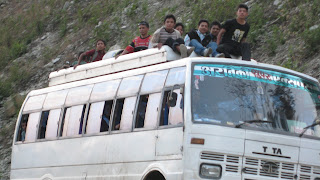Nov 1st,
2012 Delayed
Made my way to the airport in the late
afternoon with plenty of time to relax and kick back. Passing
through security checks at any airport these days is unpredictable.
By now, I should have learned to expect the unexpected. But a four
hour plane delay?
The worse part of being delayed four
hours is not sitting in the airport, twiddling your thumbs.
Is knowing that you will miss your connecting flight. It really
sucks and is totally out of your control. I would arrive within a
half hour of my plane leaving for the States, But, Customs would take
at least that long to clear and then trying to get to the other
terminal... not possible. I cleared the customs area at
approximately 10:30 PM. The plane was scheduled to leave at 10:35
PM. But wait, there's more!
When I finally arrived in Delhi, I had
to leave the arrivals area and then make my way to the departure
zone, which took about ten minutes. Guess what? When I tried to
enter I discovered you are not allow in the airport unless you have a
ticket that has not expired. A the time, I was not aware that the
plane home was delayed till midnight, but a delay is what I was
hoping for and why I wanted to gain access. Still, I was not allowed
in. So India has a special area for people like me. There were
ticket booths in this isolated zone but no one was working them, at
least not at the United Airlines counter. No phone number to call,
no one from the airport able or willing to help, another than to say
“come back tomorrow”. And none of the other airlines offering
some insight to their system. I will spare you with the rest of the
details of my ordeal. Suffice, if not to say, no one ever showed up
to the United/Continental ticket counter but I finally received some
assistance at 7:30 PM the following day. But the military security
still would not let me pass until a ticket was issued. The
representative had to go inside the airport, book me a ticket and
bring it out to me, which finally satisfied the military. (Sorry, no
photographs to show you the chaos at Delhi's Airport I was happy to
get out of there and will do everything I can not to fly through
India again.
So, that's my story! Hope you've
enjoyed it. I've filed my papers to start a non-profit foundation
and hope to return to Nepal next year with a team of biologist and
educators to document exactly what's out in that jungle and to help
the Sherpa people improve their lives without compromising their
lifestyle. If you'd like to join the project, or contribute, contact
me at canislupusproductions@gmail.com.
We'll be lunching a website ((nepaltigers,org) by January 2013.




























